Engines of the Coast Daylight

The GS-2 locomotives were the Daylight's first streamlined steam engine. They were of the Northern type 4-8-4's and classed Golden State model 2. They were designed by Southern Pacific and built by Lima Locomotive Works in 1936 for the new 12 car Daylight passenger train. They had 73.5 inch drivers and could develop 4500 horsepower at 55 mph with a maximum speed of 90 mph. The cabs were not “all weather” types, being open at the rear. The tenders were rectangular and had two independent tanks, a 6010 gallon fuel tank for oil, and a 22,000 gallon water tank. Access to the open cab were on ladders attached to the front of the tender. The GS-2 units were 107 feet 11.75 inches long and weighed 823,900 pounds fully loaded.
Southern Pacific ordered six locomotives, numbers 4410 to 4415. Each GS-2 cost approximately $136,000. All engines were delivered to Los Angeles, California for set up. Number 4410 was the first and set up on January 1, 1937. Number 4415 was the last and was put into service on January 26, 1937.
GS-2 (SP 4410 - 4415)



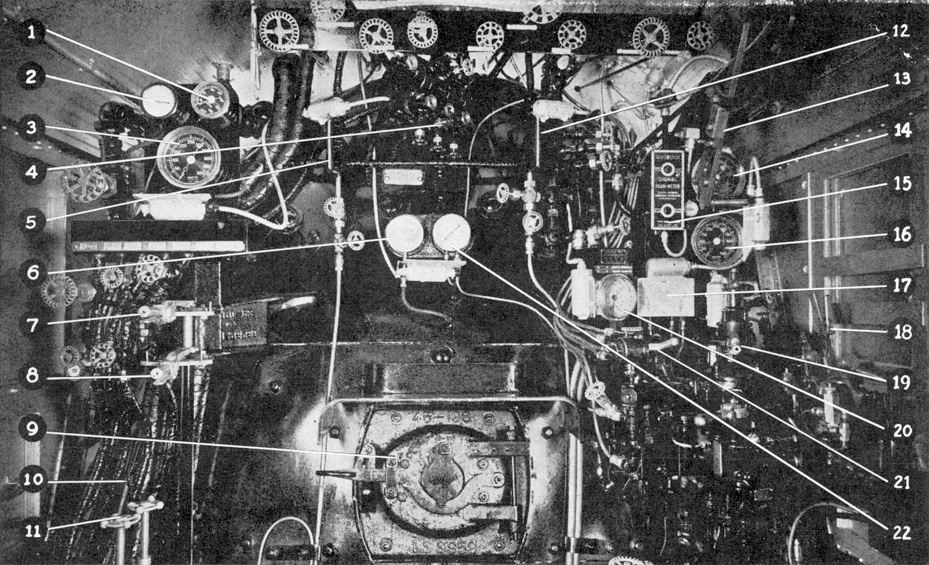
A look at the controls in the GS-2 cab: 1) Steam heat gauge, 2) Fuel oil temperature gauge, 3) Boiler steam pressure gauge (Fireman's side), 4) Hydrostatic lubricator, 5) Water gauge (Fireman's side), 6) Feedwater pump gauge, 7) Fuel oil regulator, 8) Fuel oil damper regulator, 9) Firedoor, 10) Lever for operating steam starting valve to injector, 11) Valves for controlling injector water and overflow, 12) Water column gauge (Engineer's side, 13) Steam throttle valve lever used by engineer in running locomotive, 14) Booster steam pressure gauge, 15) Signal Foam-Meter, 16) Boiler steam pressure gauge (Engineer's side), 17) Quadruplex air gauge, 18) Power reverse lever, 19) Engineer's brake valve, 20) Locomotive Valve Pilot for speed and cut off indications, 21) Sander valve, 22) Tank water level indicator
GS-3 (SP 4416 - 4429)



The popularity of the 1937 Coast Daylight trains was overwhelming and prompted the Southern Pacific to initiate plans to introduce several new streamlined lightweight trains: Noon Daylight, San Joaquin Daylight, and the Lark. The GS-3 locomotives, though similar in general design as the GS-2, had 80 inch drivers (6.5 inches larger than the GS-2) and were capable of developing 5000 horsepower at a speed of 60 mph with a maximum speed of 106 mph. The GS-3 units were 109 feet 9.75 inches long and weighed 835,500 pounds fully loaded.
A second order for 14 additional Daylight engines was placed with Lima Locomotive Works. All engines were set up upon delivery at El Paso, Texas. Number 4416 was the first and was set up on November 3, 1937. Number 4429 was last and set up on December 30, 1937.
GS-4 (SP 4430 - 4457)


The two GS-5 locomotives were actually the last two engines of the GS-4 order, but because of their roller bearing journals, they were designated as Class GS-5. They were identical in design and construction to the GS-4 except for being a little heavier. The GS-5 units were 110 feet 2.25 inches long and weighted 882,800 pounds fully loaded.
Why roller bearings on only these two engines? As the story goes, the president of Southern Pacific Railroad wanted two of the new GS-4's being built equipped with Timken and SKF roller bearings to see how they work out. Both GS-5's were equipped with roller bearings on all of the journals of the engine and tender. Number 4458 was fitted with Timken roller bearings while number 4459 had SKF roller bearings. It was only because of this difference that they were classified as GS-5, and they were the only steam engines built for the SP that had roller bearings (Technically, number 4459 was classed GS-5A while number 4458 was classed GS-5). Number 4458 was set up on June 21, 1942, while number 4459 was set up on June 5, 1942.


The GS-4 also was the first to utilize an enclosed “all weather” cab, which engineers really appreciated on those cold nights! Access to the closed cab were on ladders attached to the back of the engine leading to doors on both sides. The engines also had a Mars signal light which was installed above the regular road headlight. The light was manufactured by Mars Signal Light Company. The motor driven signal light beam flashed upward and sideways with an oscillatory motion that formed a figure eight pattern (∞) and projected a distance of 1400 to 3000 feet forward and 750 feet sideways. The sweeping light acted as a warning at grade crossings by attracting attention to motorists and pedestrians. The Mars light could double for a headlight in case of failure of the regular headlight.
GS-5 (SP 4458 - 4459)




The pictures above show roller bearings installed on trailer truck axels. On the left Timken roller bearings for 4458, and on the right SKF roller bearings for 4459.
As a side note, Southern Pacific was very cautious when considering the application of roller bearings to railroad equipment. Each roller bearing on the GS-5 cost $27,000 more than the standard journal bearings with “spring pad lubricators” (an SP invention) used on the locomotives and other passenger equipment. Cost was a big factor at the time and SP did not use roller bearings on any other equipment until the late 1940s when cost started to come down. Because roller bearings had less friction, engine crews noted that it took a little more air to bring a GS-5 to a stop as they “just wanted to keep on rolling.” Roundhouse crews knew they “really had to tie 'em down, or they'd just start rolling away.”
The GS-5's were Southern Pacific's finest contribution to motive power in the annals of railroad history. Engine crews said they had the best ride of all the Daylight locomotives. None were finer!
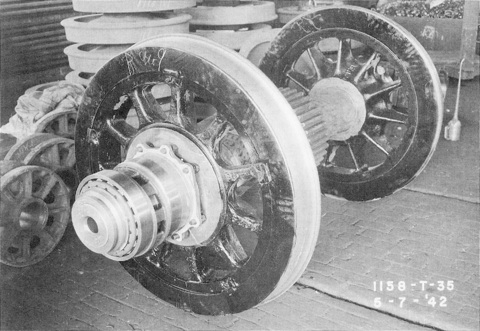
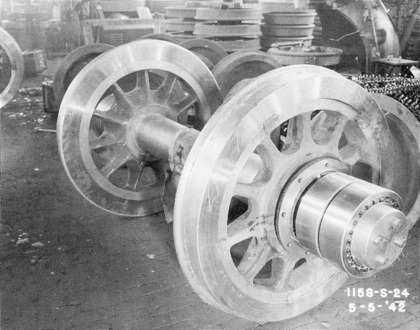
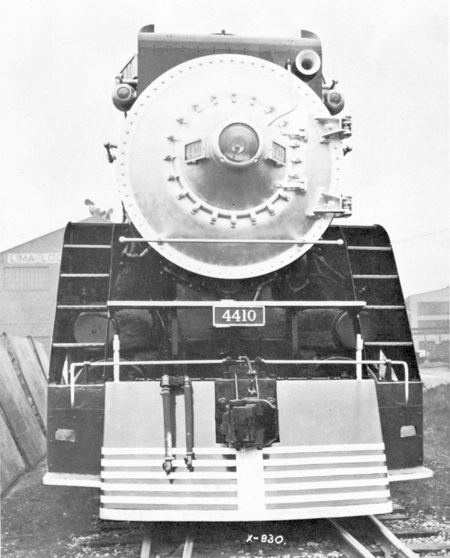
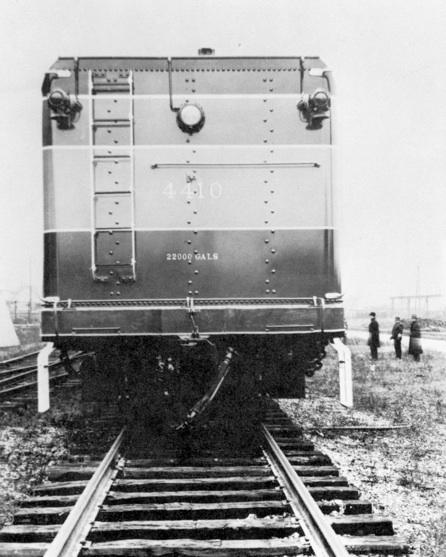

As Daylight ridership increased even more, Southern Pacific decided to order more locomotives with even more power to meet the demand. The GS-4 class 4-8-4s represented the high mark in Southern Pacific passenger locomotive design. They had 80 inch drivers and could develop 5500 horsepower at 55 mph with a maximum speed of 110 mph. The tenders had rounded off edges to make them more streamlined and had a 5880 gallon fuel tank for oil and a 23,500 gallon water tank. The GS-4 units were 110 feet 2.25 inches long and weighted 870,600 pounds fully loaded.
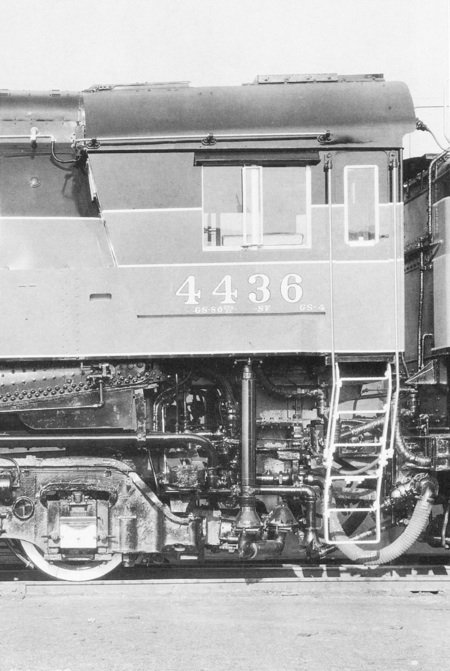
The engine controls in the cab were arranged so everything was in easy view and at the crew’s finger tips. Every valve, gauge, and lever had a nameplate identifying its function. The left side are the fireman’s controls and the right side are the engineer’s controls. The cab interior was painted sea foam green and the firebox, piping, and valves painted black. The cab walls were 1 inch tongue-and-groove hardwood. The crew’s seats were padded and adjustable, as were the sliding windows. They also had a sliding access door mounted in the cab roof, which let in natural light from above. The GS-4 design really had crew comfort in mind.
Southern Pacific ordered 30 locomotives (28 GS-4's and 2 GS-5's) at an approximate cost of $175,000 each. Like before, the locomotives were built by Lima Locomotive Works. The first group of 20, numbers 4430 to 4449, were delivered in April and May of 1941, while the second group of 8 GS-4's, numbers 4450 to 4457, arrived during March, April, and May of 1942. Number 4430 was set up on April 11, 1941 and 4449 was set up on May 30, 1941. Number 4450 was set up on March 27, 1942 and 4457 was set up on May 9, 1942.
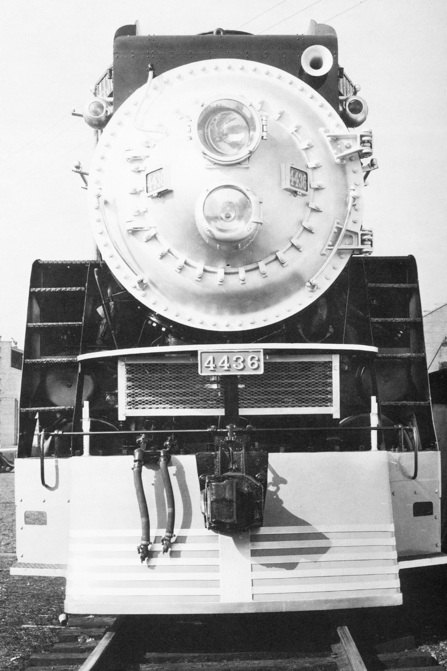
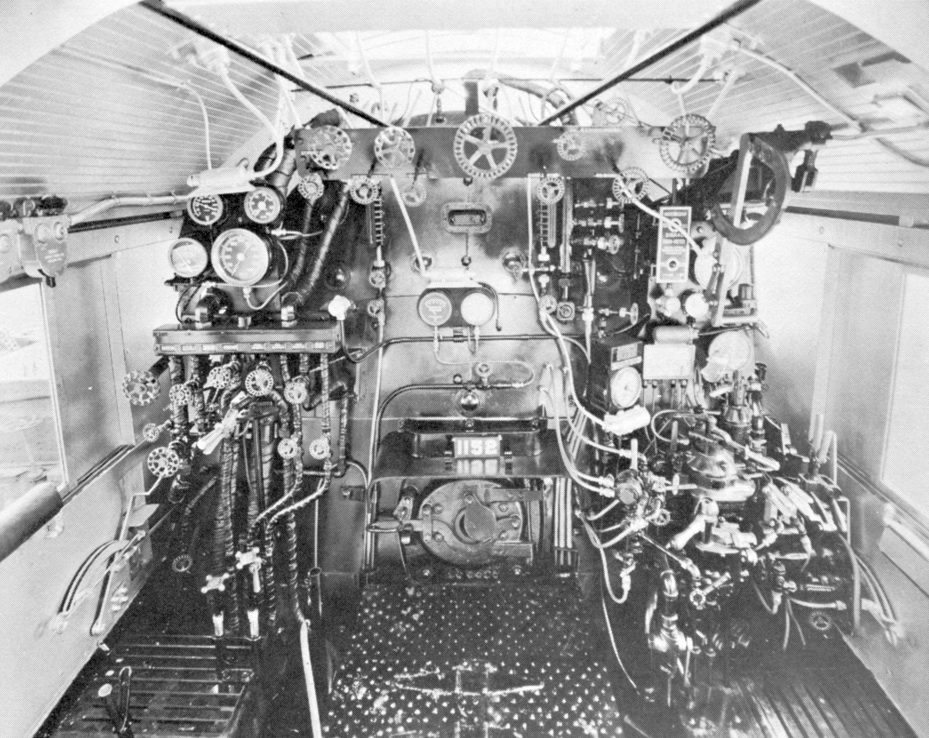
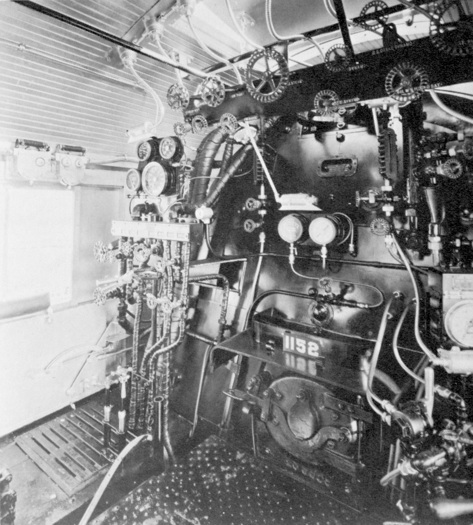
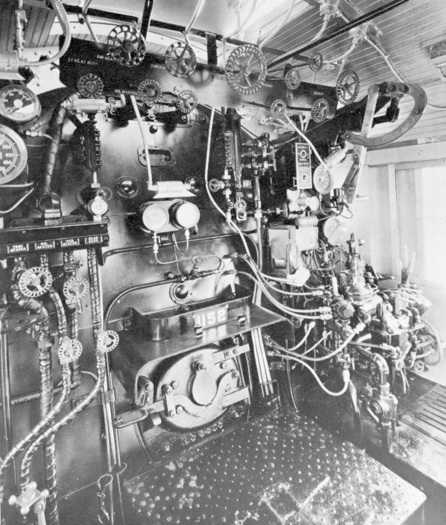
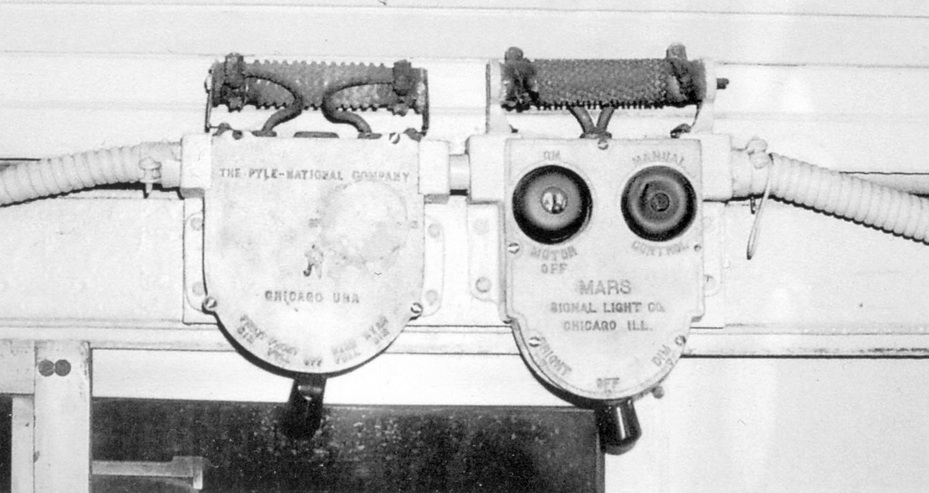
The controls for the Mars light were located above the side window on the fireman’s side of the cab. There was a toggle switch for turning the motor on or off and a manual push button control or “inch switch” which permitted moving the bean to any desired position in the figure eight pattern.

